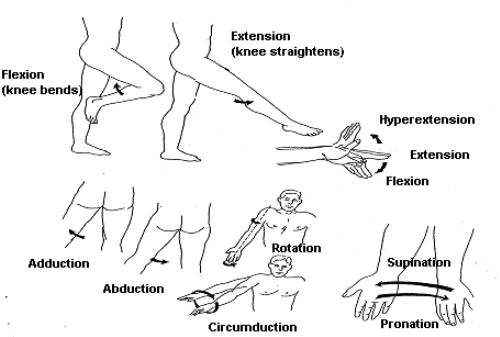Plan when range of motion exercises should be done (see figures 5-2 and 5-3).
Plan whether exercises will be passive, active-assistive, or active. Involve the patient in planning the program of exercises and other activities because he/she will be more apt to do the exercises voluntarily.
Expect the patient’s heart rate and respiratory rate to increase during exercise.

Range-of-motion exercises should be done at least twice a day. During the bath is one appropriate time. The warm bath water relaxes the muscles and decreases spasticity of the joints. Also, during the bath, areas are exposed so that the joints can be both moved and observed. Another appropriate time might be before bedtime. The joints of helpless or immobile patients should be exercised once every eight hours to prevent contracture from occurring.
Joints are exercised sequentially, starting with the neck and moving down. Put each joint needing exercise through the range of motion procedure a minimum of three times, and preferably five times. Avoid overexerting the patient; do not continue the exercises to the point that the patient develops fatigue. Some exercises may need to be delayed until the patient’s condition improves.

Start gradually and move slowly using smooth and rhythmic movements appropriate for the patient’s condition.
Support the extremity when giving passive exercise to the joints of the arm or leg.
Stretch the muscles and keep the joint flexible.
Move each joint until there is resistance, but never force a joint to the point of pain.
Keep friction at a minimum to avoid injuring the skin.
Return the joint to its neutral position.
Use passive exercises as required, however, encourage active exercises when the patient is able to do so.

